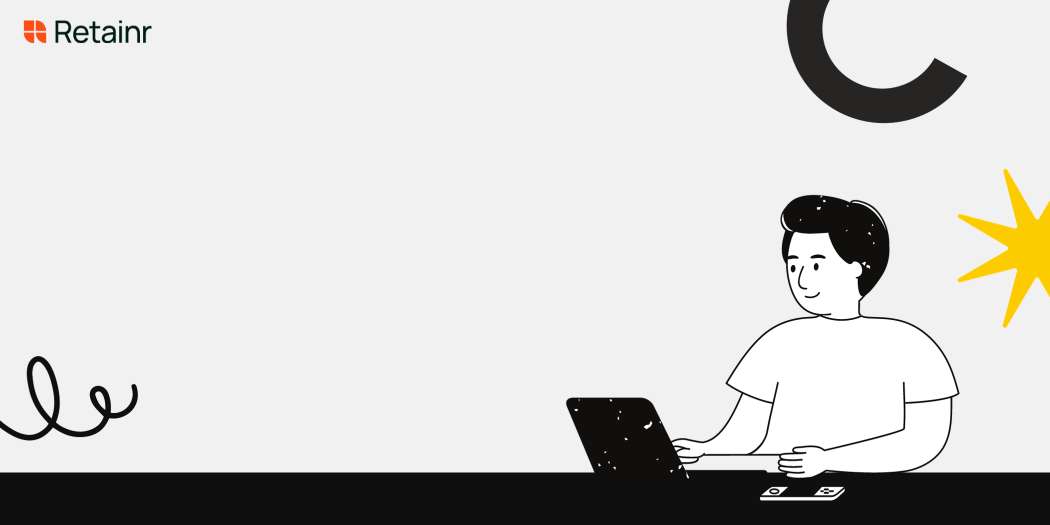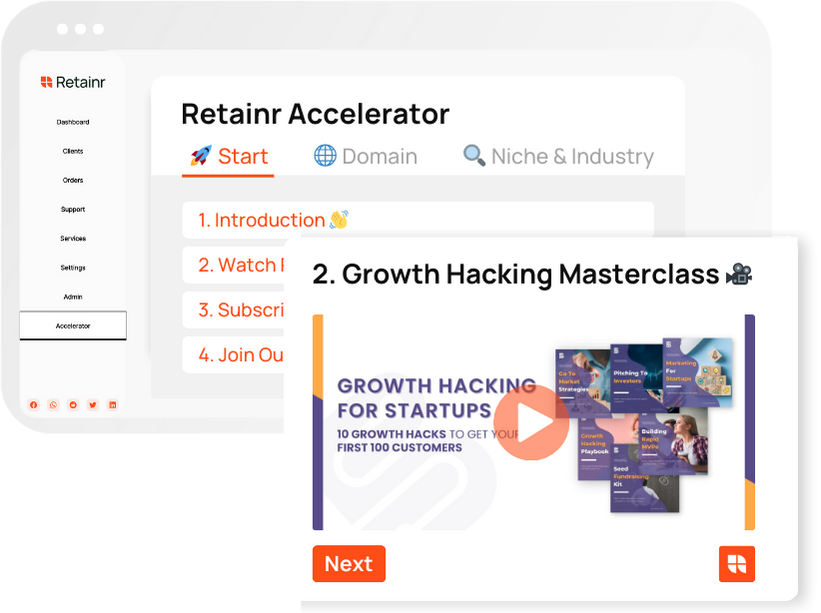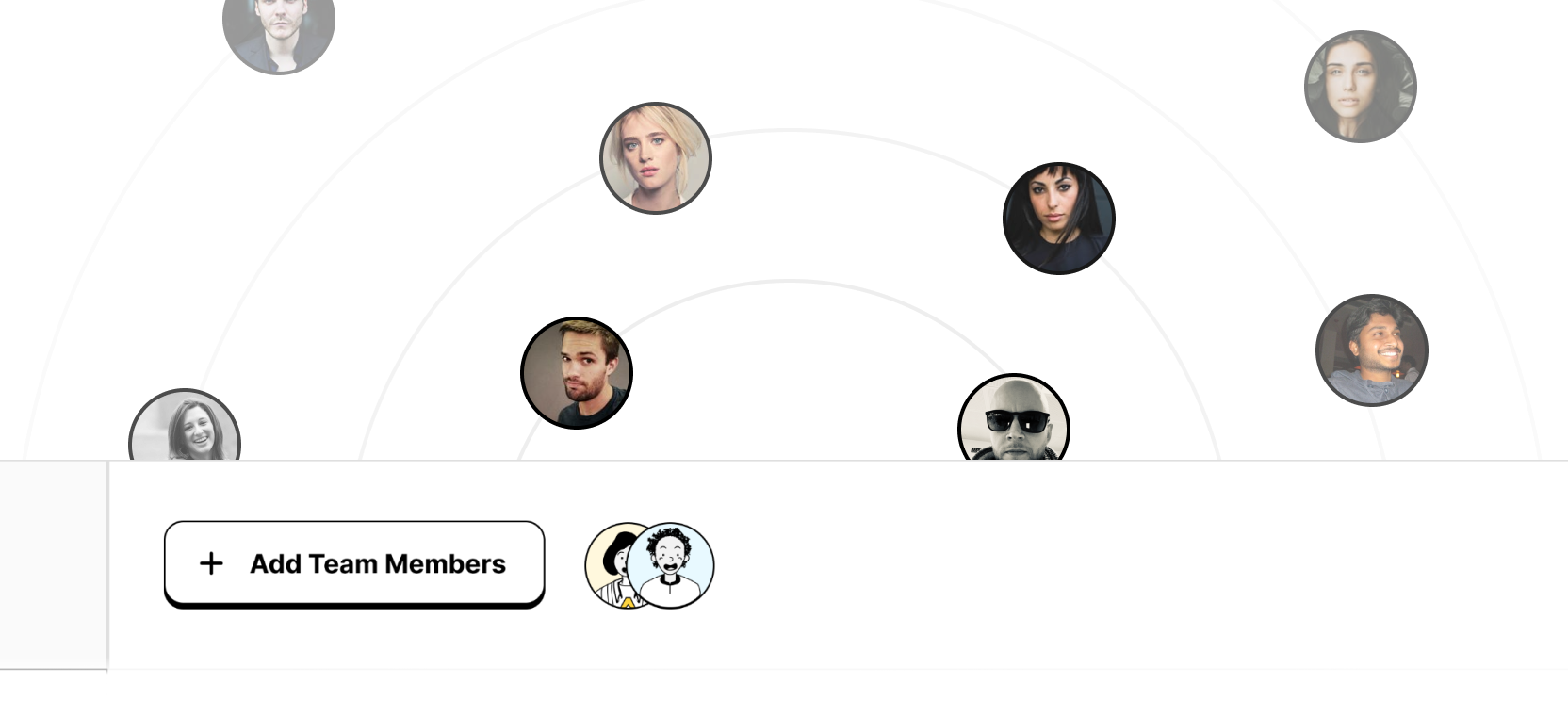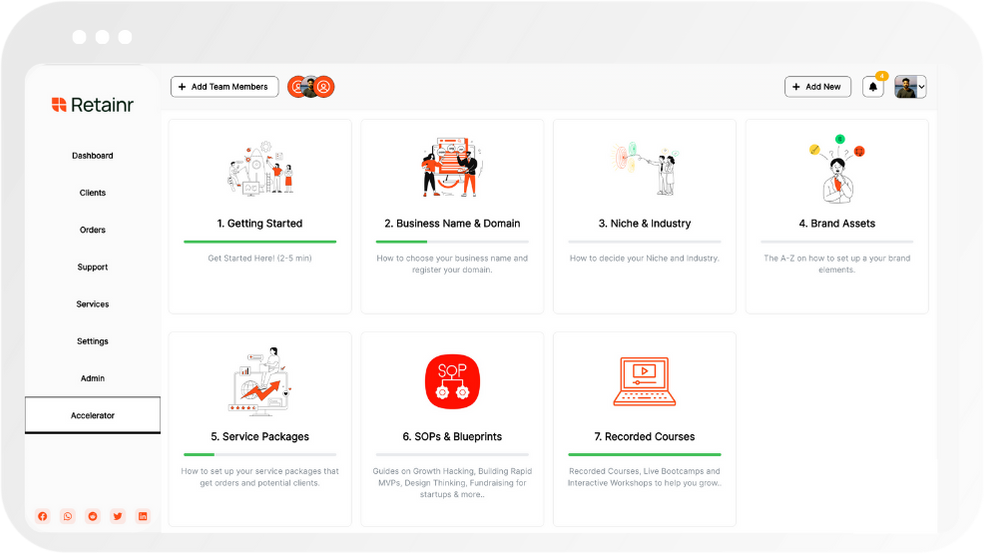
How to Write Engaging Email Copy
Build with Retainr
Sell your products and services, manage clients, orders, payments, automate your client onboarding and management with your own branded web application.
Get Started1. What are some tips for writing engaging email copy?
Tips for Writing Engaging Email Copy
Writing engaging email copy is an essential skill in the digital marketing world. It allows you to connect effectively with your audience, encourage conversions, and ultimately boost your business. Here are a few key tips to follow:
- Know your audience: Understanding your audience's needs and preferences is crucial. This allows you to tailor your message to meet their interests.
- Keep it concise: Internet users typically have short attention spans. Therefore, your emails should be short and fresh. Make every word count.
- Use a compelling subject line: Your email's subject line is the first thing your audience sees, so make it count. It should be intriguing and pertinent to the content of the email.
- Personalize: Emails that address the recipient by name tend to be more engaging. If possible, use other personalized information as well.
Structured Approach to Engaging Email Copy
A systematic and well-thought-out approach can effectively guide the writing process, ensuring that your email copy is engaging and actionable.
| Step | Action |
|---|---|
| 1 | Understand your audience |
| 2 | Craft a compelling subject line |
| 3 | Write concise and relevant content |
| 4 | Create a strong call-to-action |
| 5 | Personalize content |
The Role of Testing in Writing Engaging Email Copy
Aside from following these tips, it’s necessary to test and refine your emails regularly. You can use these methods to do so:
- Split testing: Also known as A/B testing, this involves sending out two variations of an email and seeing which one performs better.
- User feedback: Survey your audience or ask for direct feedback about your emails.
- Analytics: Use email marketing tools to observe open rates, click-through rates, and conversions.
2. How do you create a compelling subject line for an email?
Creating Compelling Subject Lines
A compelling subject line is a crucial element of your email as it's the first thing your recipient will see. There are a few tested strategies that can help you craft a subject line that grabs attention:
- Personalisation: Use the recipient's name or personal details to hook their attention.
- Brevity: Keep your subject line short and to the point. Aim for around 50 characters.
- Urgency: Create a sense of urgency to provoke immediate action.
- Value Proposal: Highlight the benefits or value your email will provide.
Email Subject Line Best Practices
Here are some best practices that you can use as guidelines when drafting your subject line:
| Do's | Don'ts |
|---|---|
| Make it clear what your email is about | Avoid using ALL CAPS or excessive punctuation |
| Use action-oriented verbs | Avoid using common spam trigger words |
| Test and measure your subject line | Avoid making deceptive promises |
Testing Your Subject Line
Testing your subject lines is an important step in perfecting your email marketing strategy. A/B testing involves sending email A with one subject line to half of your segment, and email B with a different subject line to the other half. You can then track which email performs better. Key performance indicators might include:
- Open rates
- Click-through rates
- Conversion rates
- Unsubscribe rates
3. What is the ideal length for an email copy?
The Ideal Length for Email Copy
There is no one-size-fits-all rule for the ideal length of an email copy as it largely depends on the purpose, audience and content of the email. However, different studies and marketing experts suggest an ideal email copy length of approximately between 50 to 125 words. This often results in the highest response rates.
Variables to Consider
- Objectives: If you're sharing an informative newsletter or complex information, you might need more words. Conversely, a brief promotional announcement can be shorter.
- Target Audience: Depending on the age, profession and interests of your recipients, the lengths might vary. For instance, younger demographics typically prefer shorter, more concise email copies.
- Content: It's important to make sure that the email content is relevant and valuable. Irrelevant content, no matter how brief, may come off as spammy.
Adapting to Your Audience's Preferences
It's crucial to monitor your metrics and adapt to your audience's engagement. If longer emails are leading to more conversions, then stick with them. However, if you notice higher engagement rates with shorter emails, then it’s better to keep the length within 125 words.
| Email Type | Ideal Length |
|---|---|
| Newsletter | 500-1000 Words |
| Promotional Emails | 50-125 Words |
| Informative Emails | 200-500 Words |
4. How can you make an email copy more personal and engaging?
Strategies to Make Email Copy More Personalized and Engaging
There are several strategies that you can employ to make your email copy more personal and engaging. Personalization is not just about using the recipient's name, but it's also about understanding their interests and behaviors to deliver relevant and compelling content. Here are few strategies:
- Segment your subscribers: Create content based on your subscribers' preferences and interests.
- Use conversational tone: Write as if you're talking directly to one person, making it more personal and relatable.
- Personalize the subject line and email copy: Use their first name, mention a recent purchase or activity.
- Provide value: Include tips, guides, eBooks, or exclusive offers - any content that your subscribers might find useful.
Adding Interactivity to Make Emails Engaging
Adding interactivity in emails may help increase engagement rates. Interactive emails include elements that your subscribers can interact with within the email itself – from simple things like hover effects and drop-down menus to more complex features like quizzes and surveys. Here are few tips:
- Add GIFs, animations, or videos: These elements make your email visually appealing and grab the reader's attention.
- Include quizzes or surveys: This is an effective way to collect data and learn more about your subscribers.
- Use sliders or carousels: These features allow you to showcase multiple products, services or features in one email.
- Add countdown timers: This creates a sense of urgency and encourages the readers to take immediate action.
Components of Engaging Email Copy
| Components | Description |
|---|---|
| Subject Line | The first thing the recipient sees. It should be compelling and offer a clear value proposition. |
| Opening Line | It should hook the reader in and give them a reason to continue reading. |
| Body Copy | The bulk of your message. It should be concise, compelling, and relevant to the recipient. |
| Call to Action | Direct the recipient on what to do next. It should be clear, easy to find, and compelling. |
5. How do you balance informative and promotional content in an email copy?
Striking the Right Balance between Informative and Promotional Content
Incorporating both informative and promotional content in an email copy requires a delicate equilibrium. An email copy that is too promotional can turn your audience off, while overly informative content may fail to incite action. Here are three helpful guidelines to help you strike this balance:
- Start with value: Begin your email copy by offering valuable information to your reader. This could be industry news, tips, or insights that relate to what your business offers.
- Delicately weave in your promotional content: After providing useful information, subtly introduce your promotional material. This could be a new product, a sale, or a special offer. Ensure your promotional message is naturally integrated into your informative content, so it doesn't feel intrusive.
- Conclude with a call to action: End your email with a strong CTA that prompts your readers to take action. This could be visiting your website for more information, taking advantage of a special offer, or sharing your content with others.
Structuring your Email Copy for Balance and Engagement
How you structure your email also plays a crucial role in balancing your content. A table format can help you neatly divide your content into sections, each serving a different purpose. Below is a simple structure of a well-balanced email:
| Section | Description |
|---|---|
| Introduction | Hook your reader by providing a short preview of the valuable information that they'll gain by reading through your email. |
| Informative Content | Present your reader with the valuable information promised. Focus on providing solutions to the issues your readers may be facing. |
| Promotional Content | Subtly introduce your offer or product, and how it ties into the informative content shared. |
| Call to Action | Motivate your reader to take the desired action - be it making a purchase, clicking on a link, or sharing your content. |
Measure and Adjust for Optimum Balance
Finally, remember that balancing your informative and promotional content is an ongoing process. The perfect equilibrium for your target audience can be found through regular testing and adjustment. Monitor the engagement of your emails, including open rates, click-through rates, and conversion rates. These metrics can help you understand what proportion of promotional versus informative content resonates best with your readers. Adjust your approach based on these findings for continual improvement.
6. What elements should be included in an engaging email copy?
Key Elements of Engaging Email Copy
An engaging email copy can serve as a strong communication tool for any kind of business. To successfully captivate the reader's attention, certain crucial elements should be included in your email copywriting. Consider integrating the following components:
- Headline: This should be catchy and immediately grab the attention of the reader.
- Opening line: A compelling opening line is necessary to draw the reader further into the email.
- Value proposition: Explain clearly the benefits that the reader will get from your product or service.
- Relevant Content: Make sure your content is relevant to the reader's needs or interests.
- Call to Action (CTA): A clear and compelling CTA is critical to encourage the reader to take desired action.
Email Copy Structuring
Moreover, the structure of the email is an often overlooked yet crucial aspect of email copywriting. It should be well-organized to maintain the reader's engagement. Here is a sample structure of an engaging email copy:
| Section | Description |
|---|---|
| Headline | Attention-grabbing line to intrigue the reader |
| Introduction | A brief overview or introduction of the topic or offering |
| Main Body | Detailed, relevant content providing value to the reader |
| Call to Action | Inspirational CTA to guide the reader to take the next steps |
| Conclusion | Summarize the main points and reinforce the value proposition |
Formatting and Optimization
Lastly, to achieve maximum impact, the formatting and optimization of the email copy should be meticulous. This includes:
- Short, concise sentences and paragraphs: This improves readability and ensures that essential points stand out. It makes it easy for readers to skim the content.
- Use of bullet points: This helps to break down complex information into digestible pieces, making it easier to comprehend.
- Mobile Optimization: A significant portion of emails are read on mobiles. It is essential to optimize the email copy for mobile viewing, ensuring that your content can be easily read on all devices.
7. How can you integrate calls-to-action effectively in an email copy?
Importance of Clear Calls-to-Action
Whether you're trying to drive website traffic, encourage customer purchases, or spark social engagement, incorporating Calls-to-action (CTAs) effectively into your email copy is crucial. It should be prominent and inspire your audience to take the action you’ve asked for. Remember, CTAs should not be an afterthought; they should be strategically placed. You can make use of list before incorporating the actions in your CTA:
- Use action-oriented verbs
- Keep it short and concise
- Highlight the benefits
- Create urgency
- Use persuasive text
- Make the CTA visually distinctive
- Test the effectiveness of your CTAs
Strategic Placement of CTAs
Placement of your CTA is often as important as the phrasing. You could have the most persuasive phrasing, but if your CTA isn’t in a noticeable and prominent place, it won't be effective. Some recommended areas to place your CTA include:
- At the end of the email – this is the traditional placement
- In the middle of the email – for longer emails, it can break the text and prompt action
- At the top of the email – visible without having to scroll down
Using Tables To Highlight CTAs
Another effective strategy in email copy is using tables to highlight your CTAs, especially when you have multiple actions that you want your readers to take. Here's an example:
| Action | Description |
|---|---|
| Subscribe Now | Click here to ensure you don't miss out on our weekly newsletter. |
| Start a Free Trial | Experience our premium features free for 30 days. No credit card information required. |
8. What strategies can you use to improve open rates through engaging email copy?
Use Captivating Subject Lines
The first impression of your email comes through your subject line. Making it captivating and relevant helps boost your open rates. Techniques to consider include:
- Personalization: Include the recipient's name or other personal information.
- Ask a question: This invokes curiosity and encourages readers to open your email for answers.
- Use numbers: Numbers quantify your message making it concise and appealing.
Segment Your Email List
Segmentation of your email list helps deliver the right content to the right people, hence improving open rates. By understanding different characteristics of your subscribers, such as their interests, demographics, or purchase history, you can tailor your email copy for better engagement. Different techniques include:
- Demographic segmentation: Differentiating based on age, occupation, gender etc.
- Behavioral segmentation: Segregating based on actions like recent purchases or website interactions.
- Geographical segmentation: Segmenting by location, climate, or language.
Optimize Email Timings
Finding the optimum time to send your emails can significantly improve your open and click-through rates. Below is a table showing highest open rates according to different weekdays. This timing differs based on who your audience is and it's essential to experiment and find out what works best for your list:
| Weekday | Highest Open Rates |
|---|---|
| Monday | 10AM |
| Tuesday | 10AM |
| Wednesday | 2PM |
| Thursday | 10AM |
| Friday | 10AM |
9. How should one structure an engaging and effective email copy?
Understanding Email Structure
Creating an engaging and effective email copy requires an understanding of the basic structure. This typically includes three main parts: the subject line, the body, and the call to action (CTA). The subject line should be compelling and spark interest. The body of the email should be concise, engaging, and provide value to the reader. Lastly, a great email must include a call to action that encourages the reader to take some sort of action.
Key Elements of Effective Email Copy
To create compelling email copy, consider these elements:
- Personalization: Address the reader by their name and make your emails as personalized as possible.
- Engaging language: Use compelling language that convinces the reader to continue reading and take action.
- Strong CTA: Make your call to action clear and contribute towards achieving the email's goal.
- Value proposition: Make sure the value your product/service offers is clear in your email copy.
Structuring Email Content
Next, let's consider how the structure can look in terms of content. Below is an example of how content can be distributed in email body:
| Beginning | Middle | End |
|---|---|---|
| Address the reader and provide some context or introduce the topic. | Elaborate on the main points, details, or unique selling points. | Finish with a strong CTA and thank your reader for their time. |
10. How can you use storytelling or narrative techniques to make email copy more engaging?
The Power of Storytelling in Email Copy
Storytelling is an incredibly powerful tool in email copy. It helps to establish a connection with the reader, make your message more memorable, and prompt your audience to take action. There are various narrative techniques that you can use to make your email copy more engaging:
- Use a clear structure: All stories have a beginning, middle, and end. For email copy, this translates to presenting a problem, offering a solution, and providing a clear call to action.
- Create relatable characters: Make your brand or product the hero of your story, while your readers are the beneficiaries of whatever your hero offers.
- Use vivid language: Describe scenarios and situations in ways that provoke the reader's senses and emotions.
- Engage tension: Introduce conflict or a challenge and describe how it's resolved, leading to a satisfying conclusion. This keeps readers interested and engaged.
Implementing Narrative Techniques in Email Copy
Here’s how you can make use of these techniques in your email copy:
| Narrative Technique | How to Implement |
|---|---|
| Use a clear structure | Introduce a customer problem in your email opening, provide a solution in the body, and end the email with a clear call to action helping to solve that problem. |
| Create relatable characters | Establish your product as something that helps your customers conquer their challenges. Personify it as a friend who understands and is always ready to help. |
| Use vivid language | Don't just say your product is good; describe how it makes life better, easier, more fun, etc. Use sensory words and phrases to paint a picture. |
| Engage tension | Present a sense of urgency or a scenario that your customer wants to move away from, then show how your product or service can help resolve that. |
Conclusion
The use of storytelling or narrative techniques can truly boost the effectiveness of your email copy. It connects on a deeper level with your readers, engaging them more fully and promoting a higher response rate. It's definitely a skill worth honing for anyone seeking to excel in email marketing.
Conclusion
Mastering the Art of Engaging Email Copywriting
Knowing how to craft engaging email copy is a crucial skill in digital marketing. The good news is, this blog post details a fuss-free guide to becoming an expert in email copywriting.
Before diving into writing, it’s important to deeply understand your audience. Research, surveys, and data analysis are some of the indispensable tools to achieve this. Your email copy should always be clear, concise, and powerful. A great balance between information and character makes an extremely engaging email.
Personalizing your emails and including strong, compelling call-to-actions are also integral elements to involve your audience more. Embody the art of storytelling, make it actionable and problem-solving, and this could potentially increase your click-through and conversion rates significantly.
When it comes to email marketing, monitoring and tracking your success is essential. Constantly review and refine your email copy elements, such as the subject lines, preview text, email body, and CTAs. Metrics like open rates, click-through rates, conversion rates, and bounce rates serve as your guides to understand what works and what doesn’t.
Boost Your Email Marketing with Retainr.io
While mastering the craft of email copywriting is quintessential, having the right tools in hand can take your efforts to new heights. One such essential tool is Retainr.io.
Retainr.io is a white label software that helps you sell, manage clients, orders, and payments, all under your own brand. It doesn’t just offer the technical support you need for an effective email marketing campaign, it also empowers you to manage all client relations seamlessly.
Having a branded app powered by Retainr.io extends your online presence and solidifies your authority in the digital space. This puts you in a unique position to hook your potential consumers through engaging email copies, encouraging them to follow through with clear call-to-actions that ultimately lead to your own branded app.
Adapt the tips shared in this blog post, team up with Retainr.io, and watch your email marketing results soar like never before!
Boost Your Agency Growth
with Retainr Accelerator
Uncover secrets, strategies, and exclusive blueprints to take your agency's growth to the next level — from marketing insights to effective presentations and leveraging technology.

SOPs, Cheatsheets & Blueprints
Leverage 50+ SOPs (valued over $10K) offering practical guides, scripts, tools, hacks, templates, and cheat sheets to fast-track your startup's growth.
Connect with fellow entrepreneurs, share experiences, and get expert insights within our exclusive Facebook community.
.jpg)

Join a thriving community of growth hackers. Network, collaborate, and learn from like-minded entrepreneurs on a lifelong journey to success.

Gain expertise with recorded Courses, Live Bootcamps and interactive Workshops on topics like growth hacking, copywriting, no-code funnel building, performance marketing and more, taught by seasoned coaches & industry experts.

.jpg)

.jpeg)


